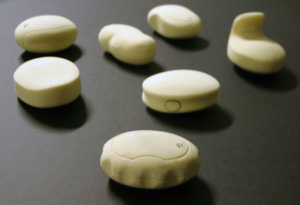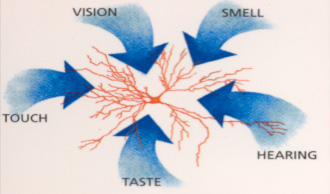Multisensory Product Design

There has been a growing recognition that developing a new product is still a largely fractionated process, with different groups working on different aspects of the product from the formulation chemist to the package designer, from the consumer evaluator to the marketer. It is important to integrate this process, with respect to a product’s sensory properties, to ensure that these are engineered into all stages of development.
How can we engineer ‘liking’ into products in a predictive rather than trial and error way? How can we find out what it is that people like about using products? How can we better measure ‘liking’? How can we measure behaviour without disrupting it? How can we give people pleasant experiences that they cannot themselves articulate they want from our products? These and other questions can be raised and addressed in a workshop format that NeuroSci can organise.
FMCG companies make a wide range of products, from soap powders to soups, and although these products have particular functional benefits that may drive purchase decisions, their selection in a ‘shopper’ context is dependent on a number of factors that precede (from days to seconds) actual decision to purchase, and these drivers are often associated with a wide range of sensory cues that are not available to conscious interrogation. The sensory / perceptual / emotional properties of these everyday products, as well as the influences from advertising and other forms of communication, play a vital part in their selection and use, over a competitor’s product that will often perform equally well – functionally. However, to engineer products that will be selected predicatively is still a largely empirical and iterative process, reliant upon verbal self-report as the primary ‘measurement tool’. Recent developments in the social, cognitive, behavioural and neurosciences has led to a new understanding of the ways in which we perceive and interact with our environment, and many of these advances are of relevance to the design of the everyday products.
One particular field in Cognitive Neuroscience that is of particular relevance to product design is multisensory perception, where it is now known that the primary senses of touch, vision, smell taste and hearing are processed in the brain, not as single sensory modalities, but as mixtures, and are ‘fused’ together to form our perceptions and inform our actions. These processes are largely hidden from our conscious experiences and operate at an implicit and often automatic level. For example the smell of an object can be changed by its colour, its feel by its sound, or its selection by the shape of the package. Even though we might intuitively know that ‘X’ goes with ‘Y’ in a particular product format, we still do not KNOW how to predict the sensory or emotional performance of a product, and too often rely upon an iterative, costly and ‘noisy’ process of asking consumers if they like it. There are better ways to build better products………

